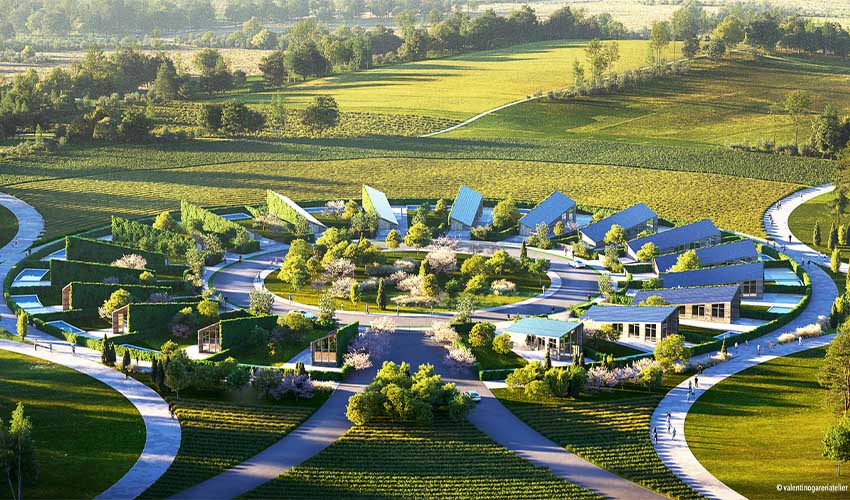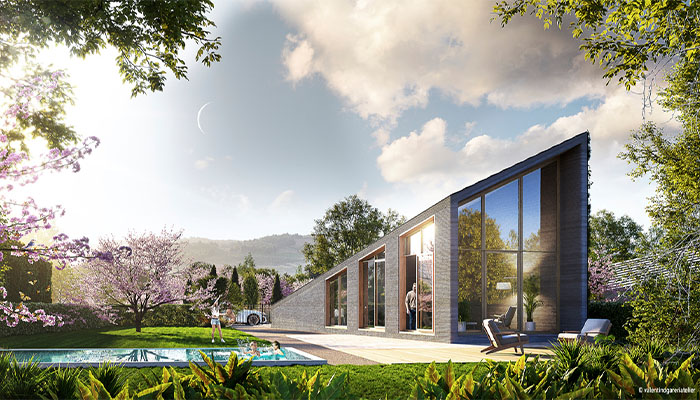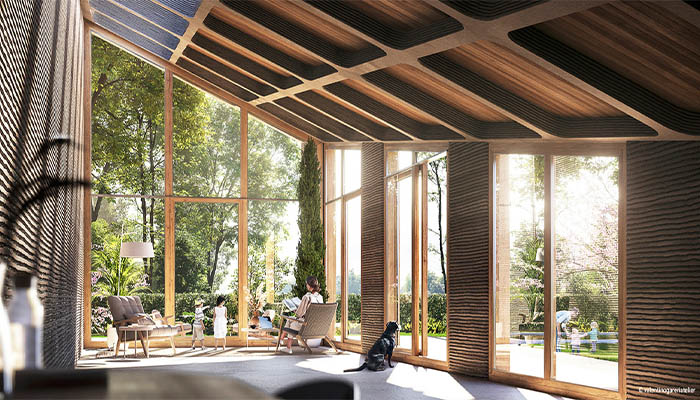The Sunflower Village: Using 3D Printing to Move Towards More Sustainable Communities

As the construction industry reinvents itself to address growing global environmental issues, 3D printed buildings have been gaining momentum. Whether in the United States, the Netherlands or China, where the first 3D printed retractable bridge was installed, the use of 3D printing in construction is rapidly growing. And some want to go even further. Architect Valentino Gareri, along with Steve Lastro of 6Sides, which specializes in technology and wellness, and Delos, one of the world’s leading real estate companies, have designed the Sunflower Village, a sustainable, ecological, innovative and 3D printed hamlet!
Composed of 19 sustainable houses, and designed for low-density rural areas, Sunflower was imagined as a way to respond to the mass exodus from the big cities, which has especially been increasing since the beginning of the health crisis. As the name suggests, the architect was inspired by the shape of sunflowers to arrange the different houses. Like the flower, the village follows a circular shape and the different houses are built around a central area. And to build the 19 houses, Valentino Gareri and his partners want to use additive manufacturing.

Photo Credits: Valentino Gareri Atelier
Expanding on this, the firm noted, “From stone and timber structure to the adoption of bricks and the arch-vaulting system, or the introduction of reinforced concrete structure that made possible to create higher and more transparent buildings.Similarly, the 3D printing technology will give form to the city of the future. This represents a more sustainable construction process compared to a traditional one, as less soil is used during the working phase.”
Eco-friendly characteristics on display at the Sunflower Village
As with the construction methods used, the houses have been designed to consume as little energy as possible. Each home is equipped with photovoltaic (solar) panels and the roof is angled to ‘follow’ in a way to capture the more efficient amount of solar radiation, similar to a sunflower in nature that turns constantly towards the sun. Additionally, the slope of the roofs also offers the possibility to collect rain, which will go directly into a water tank before being used for the toilets or irrigation. Finally, the special geometry of the houses accentuates the “chimney effect”, an effect that considerably reduces the need for air-conditioning energy thanks to the natural ventilation.
While Sunflower is only in the design stage at the moment, it would not be surprising to see this type of residential village appear within a few years. More environmentally friendly and sustainable than other cities, Sunflower seems to be a viable alternative to our current villages. Especially since, thanks to 3D printing and the type of house imagined, the habitats are almost self-sufficient, consuming very little energy. You can find out more about the project on Valentino Gareri’s website HERE.

Photo Credits: Valentino Gareri Atelier
What do you think of the Sunflower Project? Let us know in a comment below or on our Facebook and Twitter pages. Don’t forget to sign up for our free weekly newsletter, with all the latest news in 3D printing delivered straight to your inbox!
*Thumbnail Photo Credits: Valentino Gareri Atelier






